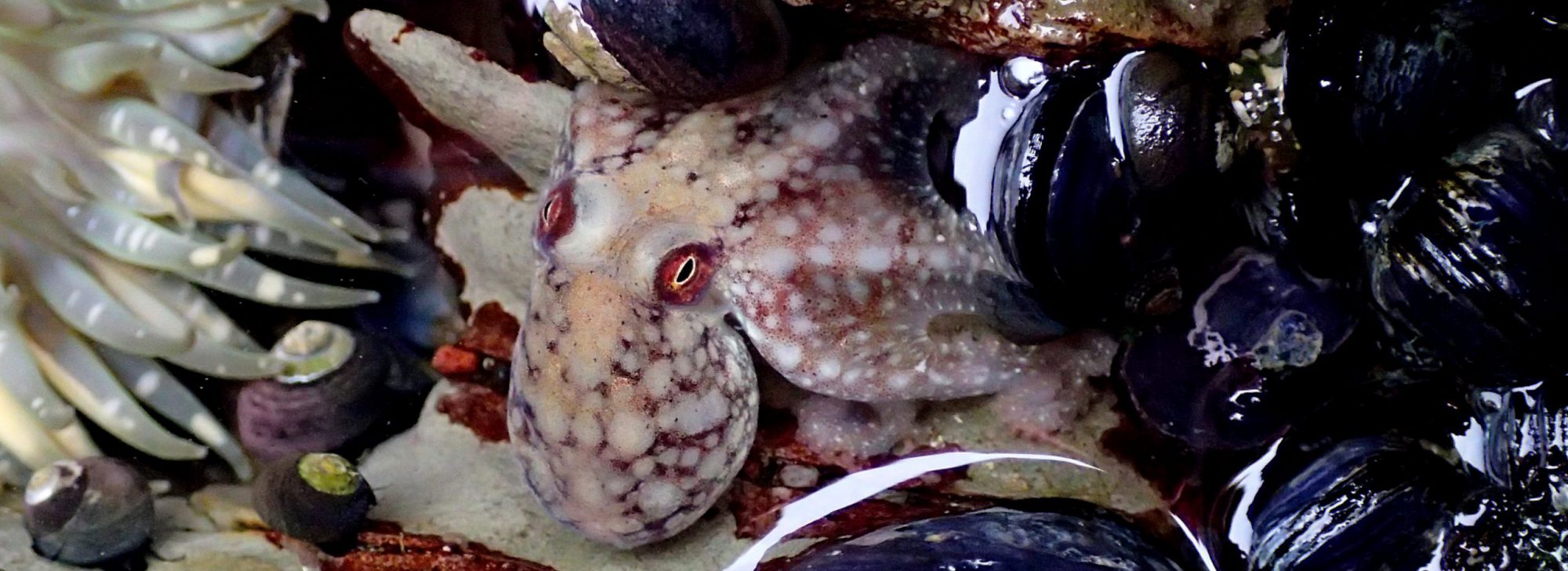This is the time of year when whales visit Monterey Bay and often come quite close to shore. Humpbacks, in particular, are commonly seen from beaches in the fall. Earlier in the summer they are out over the Monterey Canyon feeding on krill. In the late summer and early fall they switch to feeding on…
Tag: marine biology
Puzzling
The marine macroalgae are, as a group, the most conspicuous organisms in the intertidal. Yet, most tidepool explorers dismiss them as “seaweeds” and move on to the next thing, which they hope is somehow more interesting. This is akin to visiting the jungles of Brazil and not paying attention to the lush foliage that defines…
Blitzin’ the intertidal, part 2
The intertidal portion of my participation in Snapshot Cal Coast 2017 is complete. I organized four Bioblitzes, two of which consisted of myself and Brenna and the other two for docents of the Seymour Marine Discovery Center (Tuesday) and the docents of Año Nuevo and Pigeon Point State Parks (Wednesday). The four consecutive days of…
Blitzin’ the intertidal, part 1
This is the second year that the California Academy of Sciences has sponsored Snapshot Cal Coast, a major effort to document and characterize the biodiversity of the California coast. To this end the Academy has organized several Bioblitzes at various sites in northern California, and solicited volunteers to lead their own Blitzes, either as individuals…
Sexy times in the tidepools
It seems that most years, the Memorial Day weekend brings some of the lowest spring tides of the year, and 2017 certainly fits the bill. I’ve been out for the past two days, heading out just as the sun is starting to rise, and already I’ve seen enough to whet my appetite for more. And with…
Peanut worms!
If I ask my invertebrate zoology students to name three characteristics of the Phylum Annelida, they would dutifully include segmentation and chaetae (bristles) in the list. And they would be correct. Annelids, for the most part, are segmented and many of them have chaetae. But in biology there are many exceptions for every rule we teach,…
Eight is enough
One of the defining characteristics of the Phylum Mollusca is the possession of a shell, which serves both as a protective covering and an exoskeleton. We’ve all seen snails, and some people may have noticed that snails often withdraw entirely into their shells and even have a little door that they can use to seal up the…
Friends in strange places
Animal associations can be strange and fascinating things. We’re used to thinking about inter-specific relationships that are either demonstrably good or bad. Bees and flowering plants–good. Mosquitos on their vertebrate hosts–bad. In many cases the ‘goodness’ or ‘badness’ of these associations is pretty clear. However, there are cases of intimate relationships between animals of different…
Gastropods x3
This past Monday I did something rare for me: I returned to the same intertidal site I had visited the previous day. I enjoyed myself so much the first time that I wasn’t able to refuse an invitation to go out there again. The site, Pigeon Point, is one of my favorites, especially in all of its spring…
Different strokes
When it comes to the natural world, I have always found myself drawn to things that are unfamiliar and strange. I think that’s why I gravitated towards the marine invertebrates: they are the animals most unlike us in just about every way imaginable. Even so, some of them have bodies at least that are recognizable…
